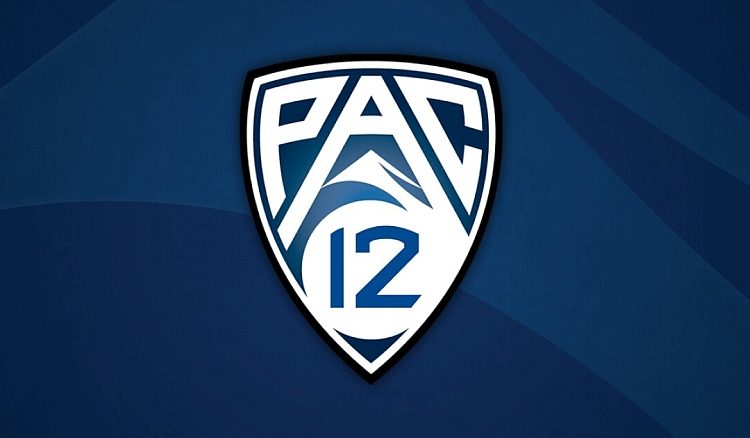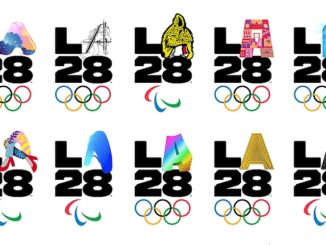
● From our sister site, TheSportsExaminer.com ●
Only football matters.
That’s the undeniable conclusion of last week’s stunning collapse of the Pacific-12 Conference, with Oregon and Washington joining USC and UCLA in the Big Ten and Arizona, Arizona State and Utah moving to the Big 12 to re-join Colorado, all based on the size of the television payouts available from each conference.
That leaves an unsustainable quartet of just Cal, Stanford, Oregon State and Washington State.
For all the glory of Stanford’s 134 NCAA team titles – the most of any school – it is nowhere. Los Angeles-based UCLA (no. 2: 121) and no. 3 USC (112) are off to play in a midwestern league after the 2023-24 seasons conclude.
Jon Wilner of the San Jose Mercury News, one of the best observers of the Pac-12 for decades, wrote in two separate articles in the past week:
“In July 2018, following a disastrous bowl season for the Pac-12, [then-Pac-12 Commissioner Larry] Scott addressed reporters and brushed aside the results on the field. ‘The scorecard we think matters … is academic and athletic success across all sports,’ he said. The comment exemplifies the ethos, shared by Scott and the presidents, that Olympic sports were as important as football. However inspiring and high-minded, the approach had zero basis in reality on the front lines of college athletics. Scott should have been all about football, all the time.”
and
“Loser: West Coast Olympic sports. Combine the increased travel for athletes at schools joining the Big Ten and the uncertainty looming for those at the four schools left behind and there is no way to cast the future in a bright light. In case there was any doubt that every available cent should be plowed into football, the past 72 hours provided it. Stanford has 134 NCAA titles and a nebulous existence to show for it.”
Chris Vannini, writing in The Athletic, noted ruefully:
“But college sports is about to learn, if it hasn’t already, that when you’ve sacrificed everything at the altar of money, you no longer control where things go, and you might not like where it ends. The big brands will be fine, but a lot of fans will be left behind, and this isn’t the end of it.”
There is no immediate danger of the college sports universe collapsing, as these conference changes will take place in a year and a lot can happen in a year. But what we see now is that television money controls football and therefore football controls collegiate sport.
But what is there is no more college football?
This is a possibility, with the consolidation of conferences continuing – it’s not over by a long shot – and the question of whether and how to pay the football players, and to a lesser extent, basketball players, whose sports are popular enough to command billion-dollar rights fees from television networks.
Inevitably, in my opinion:
● The forthcoming forced, direct payments to football and basketball players will create huge inequities on campuses, with major (negative) ramifications for all sports other the revenue-producers, and significant Title IX issues that are sure to be litigated.
● The pressure to perform will cause schools to begin dropping other programs if they want to compete in football, which will become more and more expensive.
● The most successful of these fully-professionalized sports teams will outgrow their campuses, just as European football clubs have international fan bases today. That will require the construction of whole new groups of staff to support off-the-field money-making activities, further changing the dynamic of college athletic departments into football, basketball and everything else.
● A backlash against this could lead to suddenly foreseeable consequences, such as:
(1) University leaders looking for an out, either to drop football (or go to a lower NCAA division), or to remove it from the school’s purview, by leasing its name and stadium to an outside entity, perhaps from private equity, and letting the outside entity run the program for profit.
(2) The NFL being coerced into creating – as the NBA has done with the G League – a U-23 league with as many as 64 teams to absorb all of the “name brands” in college football. Let’s remember the NBA started in 2001 with its National Basketball Development League of eight teams; there are 30 in the G League now.
Colleges and universities are supposed to prepare students for their professional lives, not be their employers. This diversion is not lost on many academic leaders who are watching the tail (football) now wagging the dog (the university).
And, for Olympic sport in the U.S., an end to football – and the money it brings – within the context of university athletic departments, is an existential catastrophe. Football and basketball revenues are the bedrock on which baseball, gymnastics, softball, soccer, swimming, track & field, volleyball and all the rest exist.
Without football, what happens?
No one knows.
The NCAA, as an organization, is not impacted much, since it gets almost all of its funding from the television rights for its men’s and women’s basketball tournaments. But its members in Division I are mostly dependent on football money to even come close to balancing their costs to operate an athletic department.
The folks at the U.S. Olympic & Paralympic Committee are well aware of these issues, but there are no easy answers and no crystal ball on what the right next move is. The American team for Paris 2024 will not be affected, but could be by the time the Los Angeles 2028 Games come around.
~ Rich Perelman




Be the first to comment